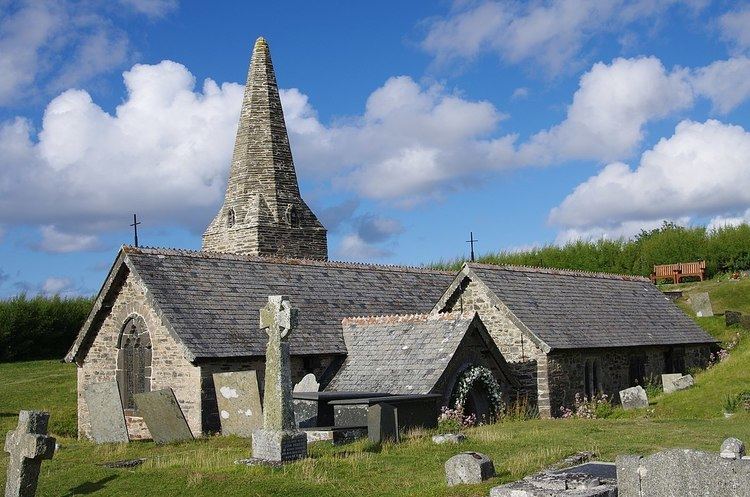Affiliation Anglican Completed restored in 1864 Architect James Piers St Aubyn | Ecclesiastical or organizational status Chapel Opened 1864 Architectural type Church | |
 | ||
Architectural styles Gothic architecture, Gothic Revival architecture Similar Camel Trail, Stepper Point, Prideaux Place, Pencarrow, National Lobster Hatchery | ||
St. Enodoc Church, Trebetherick (Old Cornish: Gwenedek, St. Guenedoc) is a chapel in the parish of St Minver. It is located to the south of the village of Trebetherick, Cornwall, England, United Kingdom (grid reference SW931772). It is a Grade I listed building.
Contents
Background
The church is situated in sand dunes east of Daymer Bay and Brea Hill on the River Camel estuary. Wind-driven sand has formed banks that are almost level with the roof on two sides. From the 16th century to the middle of the 19th century, the church was virtually buried by the dunes and was known locally as "Sinking Neddy" or "Sinkininny Church". To maintain the tithes required by the church, it had to host services at least once a year, so the vicar and parishioners descended into the sanctuary through a hole in the roof. By 1864 it was unearthed and the dunes were stabilized. The church is surrounded by the Church course of the St Enodoc Golf Club.
History
The church is said to lie on the site of a cave where Enodoc lived as a hermit. The oldest fabric in the church dates from around the 12th century. Additions were made in the 13th and 15th centuries. By the 18th century the church was partly submerged in sand. During the 19th century the sand was removed and the church was cleaned and restored under the direction of the vicar of St Minver, Rev. W. Hart Smith. The architectural restoration was carried out in 1863–64 by J. P. St Aubyn.
Structure
The church is built in stone rubble with slate roofs. Its plan consists of a nave and chancel, a three-bay aisle to the south of the chancel, a north transept leading to the tower, which unusually is to the north of the church, and a south porch. The tower is in two stages and is surmounted by a low broach spire. On all four faces are small trefoil-headed belfry openings.
Fittings and furniture
The furnishings were largely replaced in 1863–64 although the base of a rood screen dating from around the 15th century has survived. The granite font dates from the 12th century. It has a lead lined round bowl which stands on a shaft carved with cable moulding on a round base. A memorial stone to John Mably who died in 1687 is in the south porch. Inside the church on the south wall is a memorial to Ernest Edward Betjeman, the father of Sir John Betjeman, who died in 1984. There is a memorial to the three crew lost on the brig Maria Asumpta, which was wrecked on The Rumps in 1995.
Culture
John Betjeman referred to the church in his poem Sunday Afternoon Service at St. Enodoc. The church is also featured prominently in Justin Cartwright's novel The Promise of Happiness (2004), partly set in Trebetherick.
In the novel The Last Patriot by Brad Thor, the main cheacter, Scot Harvath, owns a house called Bishop's Gate, which is described as a twin to St. Enodoch.
